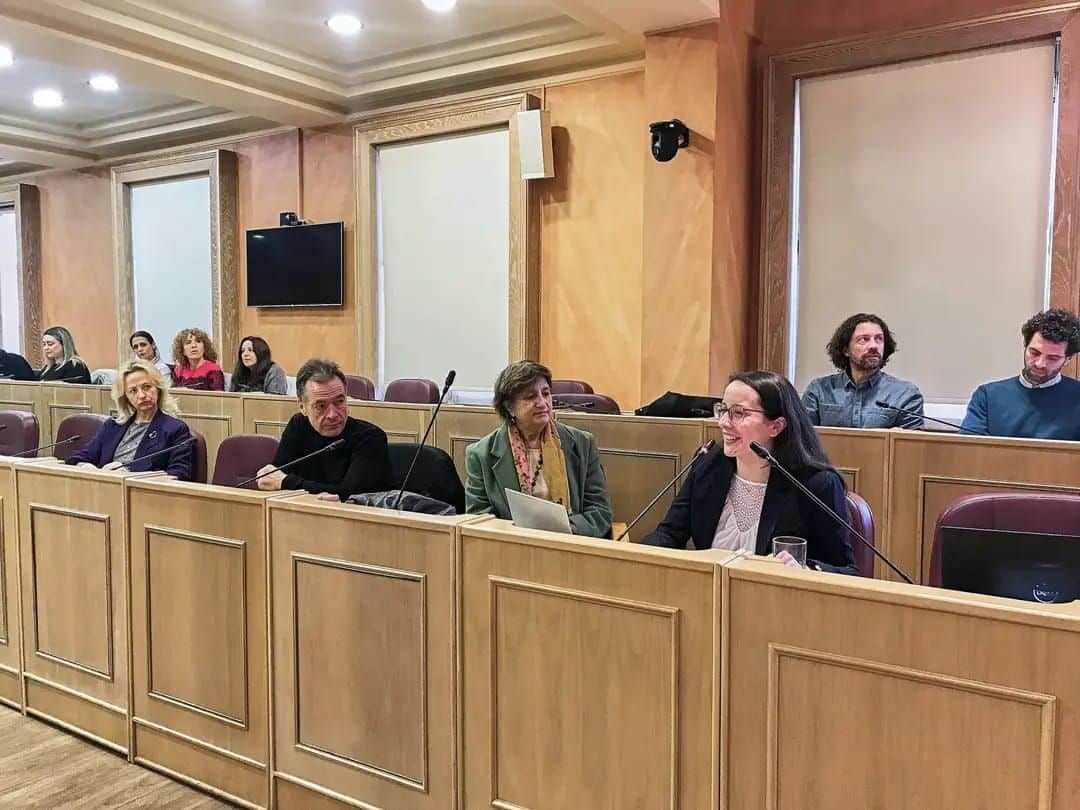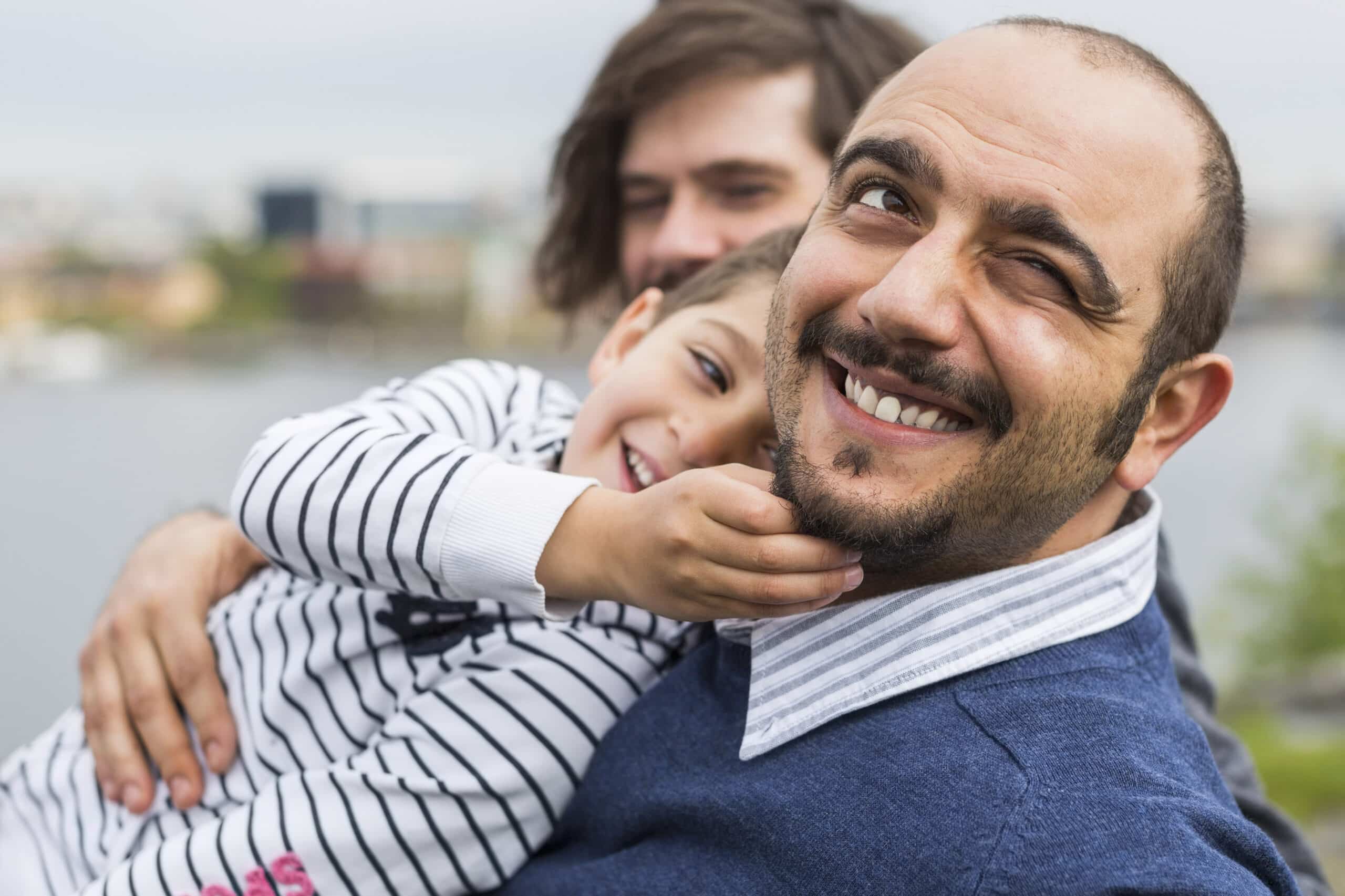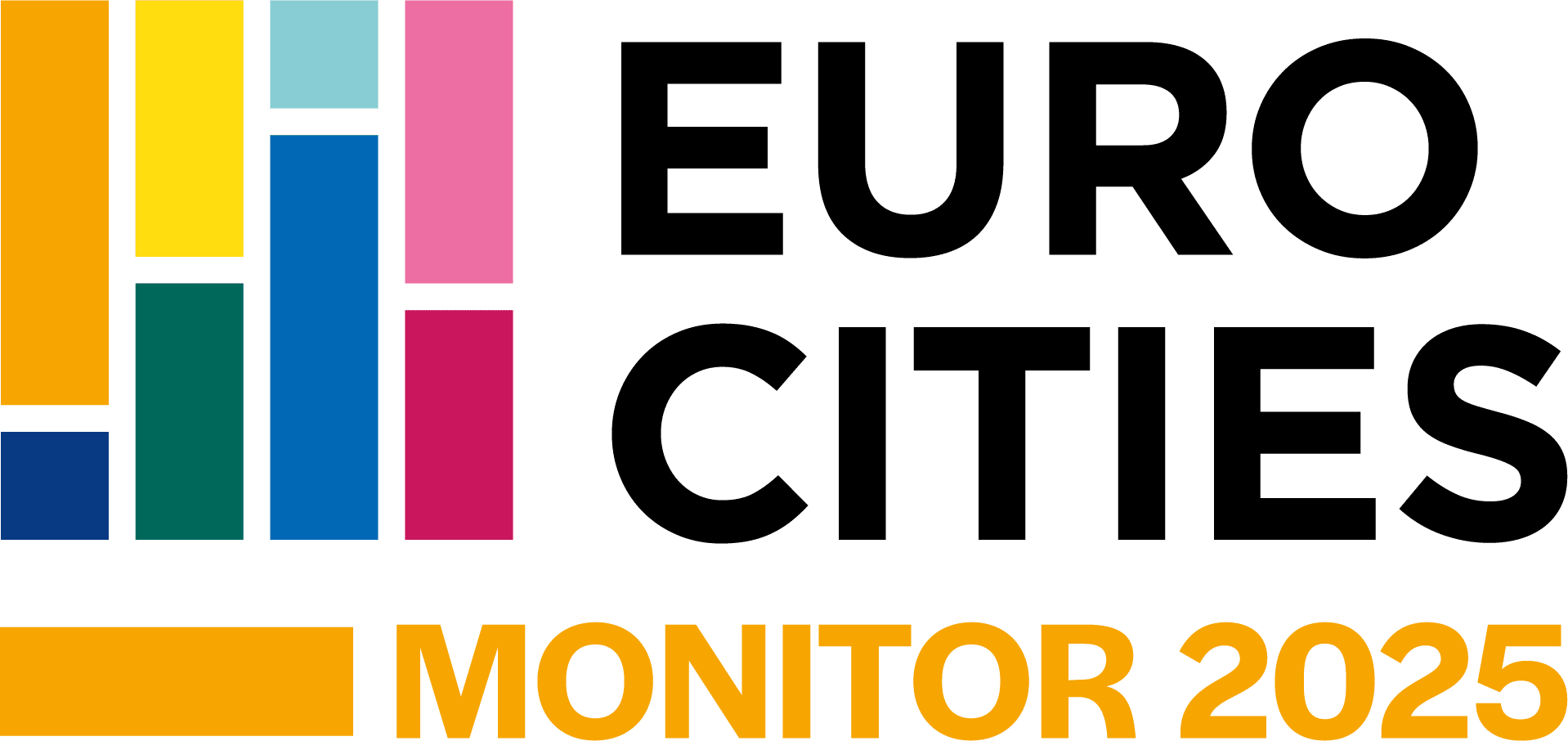Reading Time: 10 minutes
Where inclusion lives: Cities leading on migration and equality
As Europe grapples with renewed migration and social challenges, its cities stress the need for inclusive policies that uphold dignity, equality and human rights for everyone. Municipalities are one of the only levels of governments focused on developing innovative initiatives to integrate migrants and refugees and tackle inequality.
While cities face many challenges simultaneously, the Eurocities Pulse Mayors Survey 2025 show that many cities continue to rank migration among their top priorities.
What do cities do?
Hannover is redefining what it means to be an inclusive city with WIR 2.0, a forward-thinking strategy that moves beyond traditional integration. Instead of asking newcomers to adapt, Hannover is fostering a collective “we”, where everyone, regardless of their background, has an equal opportunity to participate.
Other cities across Europe are also stepping up, experimenting with new approaches to build stronger, fairer local systems. For example, by designing digital public services with inclusivity at their core, local governments are creating more responsive, efficient, and accessible systems that serve the needs of all residents.
Rather than creating new services, Espoo helps people navigate existing services and requests feedback. The focus is on stay-at-home parents, especially mothers of Arabic, Farsi and Somali-speaking communities.
Meanwhile, the city of Rotterdam launched the ‘Teatime’ project, which gathers migrant women over tea to learn how to learn essential digital skills. This includes booking a medical appointment, communicating with family, using translation apps or managing household tasks.
Through the EU-funded CONSOLIDATE project, several cities are sharing practical solutions to strengthen local social services. Nantes, Ghent and Cluj Napoca are developing One-Stop Shops to centralise support services and simplify access for newcomers. Athens, Milan, and Fuenlabrada are focusing on improving access to employment, while Gothenburg and Vienna are tackling inclusive housing.
In Lambeth, we define integration as a process of inclusion based on our values of human rights and celebration of our diversity. It’s a process by which we work to make sanctuary seekers and migrants in our communities feel welcome and safe, that they have equity of access to services that they need so they can thrive and build new lives.
– Ibtisam Adem, City Councillor and Policy Lead for sanctuary seekers and migrants in the Borough of Lambeth, London
Among these initiatives, some cities are paying special attention to the intersection of migration and gender. In Vienna, the Nachbarinnen programme has trained hundreds of migrant women to become mentors within their own communities, providing culturally informed guidance and support.
In Berlin, Project Possible has empowered migrant and refugee women through peer coaching and employment support, while also addressing digital misinformation through community-based outreach on platforms like Telegram.
How to address migrant women’s needs in local integration strategies?
This knowledge sharing session was designed by the project CONSOLIDATE for local authorities looking to enhance their approaches to inclusion and create tailored strategies that meet the specific needs of migrant women.
The session focused first on understanding the context of migrant women integration in the European Union, followed by learning the principles behind integration strategies, and what is effective for women. Attendants transitioned from theory into practice through a collective exercise. The sessions were finalised with practical steps to implement targeted integration measures for migrant women.
Two more training sessions are coming!
Cities need EU support
As one of Mayors’ 10 priorities for European citizens and cities that were presented to MEPs in Strasbourg last October, cities in the Eurocities network made it clear that migration is an issue that must be urgently addressed.
Local leaders aim to have a say in migration and asylum policymaking, including the upcoming implementation of the New Pact on Migration and Asylum, and they call for direct funding to integrate refugees and curb rising inequalities.
In truth, despite their crucial role, cities are often excluded from migration policymaking and lack access to direct EU funding to address these challenges effectively.
Cities bridge the gap between national migration policies and local realities, providing housing, tailored education, and employment programmes. While cities continue to be open and committed to welcoming asylum seekers, they are clear that this can also place a significant strain on municipal budgets and resources.
As highlighted in the 6th Integrating Cities Report, “migration developments in Europe have significantly impacted cities, requiring them to adapt and update their integration policies constantly,” says Katharina Bamberg, Head of Migration at Eurocities. These strategies are aimed not only at early reception but at genuine long‑term inclusion.
Recent events prove the point. Cities have welcomed more than six million people fleeing Russia’s war on Ukraine. In the Eurocities Pulse Mayors Survey, the local leaders of Irpin, Stuttgart and Poznań named the arrival of Ukrainian refugees their biggest, unexpected test.
’s‑Hertogenbosch, in The Netherlands, listed its “very welcoming reception of refugees from Ukraine” among its proudest achievements and flagged social polarisation as a top concern.
[Cities should look at refugees and migrants] not as inactive beneficiaries but to find them as equal people, to share their values, to be heard, to be visible and to be used as a power point and as resources for creating and co-designing the projects around these emergencies.
– Francisco Javier Ayala, Mayor of Fuenlabrada
6th Integrating Cities Report
The 6th Integrating Cities Report is a comprehensive look at how European cities foster inclusion and integrate migrants into their communities. The report highlights:
- The pivotal role of local governments as policymakers, service providers, and employers in shaping local solutions to global challenges.
- Innovative practices from cities around Europe that demonstrate how they improve housing, employment, education, and social inclusion for migrant communities.
- Key recommendations for empowering cities to collaborate with national and EU institutions, ensuring that resources and strategies effectively address local needs.
As Europe continues to navigate the complexities of migration, such as a changing landscape of asylum, migration and border management policies brought about by the EU’s New Pact on Migration and Asylum and ongoing global developments. This will have a clear impact on integration prospects and outcomes at the local level, which cities will have to face as the main integration stakeholders.
Bringing cities’ voices to the table
EU instruments such as the Asylum, Migration and Integration Fund have supported cities’ efforts through projects such as UNITES and CONSOLIDATE, but these grants favour short‑term pilots. What cities lack is predictable, structural finance for mainstream services, and fast, easily‑accessed emergency money when sudden displacement spikes demand for housing, schooling and social work.
None of this would succeed without the commitment of citizens, diasporas, migrant‑led groups and NGOs. For example, Salam Al-Nidawi, who arrived in Croatia in 2016 seeking asylum, was support to the Centre for Stress and Trauma in Zagreb, where he plays a vital role in helping newcomers overcome challenges and build their lives in the city.
Similarly, Abd Alrhman Marae fled Syria in 2014 and, after years of uncertainty, found stability in Grenoble. Today, he is an active participant in AGORA, a platform that enables migrants to co-design policies addressing housing, language learning, and employment challenges.
Or Daro Sakho, one of the Diversity Managers appointed by the mayor of Bologna to ensure equality in all local projects. The team of diversity managers is created based on an intersectional approach, and each of them acts as an intermediary between the associations in the city and the municipality.
“Cities are not merely places where migrants settle,” says Rutger Groot Wassink, Deputy Mayor of Amsterdam and Eurocities Shadow Commissioner for Welcoming Cities, “but dynamic laboratories of inclusion, where communities co-create vibrant societies.”
Cities bring invaluable practical experience and facilitate knowledge exchange, making them essential partners in shaping Europe’s migration policies.
Simona Bieliūnė, Deputy Mayor of Vilnius and Eurocities Shadow Commissioner for Welcoming Cities, states that, “Cities are the closest to the challenges and solutions surrounding migration and integration. If we want to build inclusive communities, it’s essential that local leaders have a direct seat at the table when it comes to shaping migration policies that affect the lives of migrants every day.”

Learning about co-designing migrant integration
Being one of the first of its kind in Europe, this Massive Open Online Course covers the most relevant concepts for practitioners from local, regional, and national authorities to co-design integration strategies, including the different stages of the policy cycle.
It was developed under the project UNITES and will remain open and free for everyone.
In only 5 hours, users gain:
- Detailed guidance on creating participative integration strategies.
- Tools to ensure the meaningful involvement of migrants and refugees in policy design, implementation, and evaluation.
- Inspiration from collaborative integration policy from cities across Europe.
The New Pact
For example, while cities are in favour of an equitable distribution of refugees and asylum seekers across all EU member states, they recognise that the New Pact on Migration and Asylum, fully entering into force in 2026, is set to have a considerable impact at the local level (distribution of asylum seekers, migrants’ rights, standards for the reception of asylum seekers). However, their voices have been largely absent in its development.
Once implemented, the full impact of the Pact on cities’ integration policies and practices and the situation of migrants on the ground remains to be assessed.
The war in Ukraine is not the only situation forcing people to seek protection in Europe’s cities. Quite the opposite, European cities have been safe havens for refugees fleeing conflict, persecution and natural disasters from all over the world.
This is why, at the same time as helping refugees from Ukraine, cities need to ensure that all refugees, regardless of their origins and identity, no matter the colour of their skin, their gender, sexual orientation or religion, are receiving the same right to protection.
Cities are concerned that the legislative files making up the New Pact are likely to undermine human rights standards and European values. The agreement should not only avoid criminalising migration but also should oppose populist narratives that increase harmful stereotypes and put migrants and racialised people at risk of exclusion and discrimination.

Preserving migrants’ rights
International law that guarantees equal access to rights for all refugees and people in need of protection must be upheld and applied fairly, including in the EU. Municipal commitment is also formalised in the Integrating Cities Charter. In 2024, Bologna, Dortmund, Düsseldorf, Grenoble Alpes Métropole and Vilnius raised the number of its signatories to 52, recognising migrants’ invaluable contributions to urban life. In an increasingly polarised climate, cities show that inclusion is not merely possible but essential.
In this year’s Eurocities Pulse Mayors Survey, the mayors of Amsterdam and Vantaa listed segregation among their top three concerns, while Espoo prioritises preventing social exclusion. These challenges are not short-term; demographic and social shifts ensure that issues of integration and cohesion will remain central to urban policy for the foreseeable future.
The survey results reflect this reality, highlighting a growing recognition among city leaders that inclusion must be at the heart of urban resilience. And cities are convinced that together with the EU and national level, can strengthen inclusion across Europe.
We have managed to get ahead of anti-immigration discourse and break away from it. Meeting those who are different makes us realise that we have things in common.
– Francisco Javier Ayala, Mayor of Fuenlabrada
